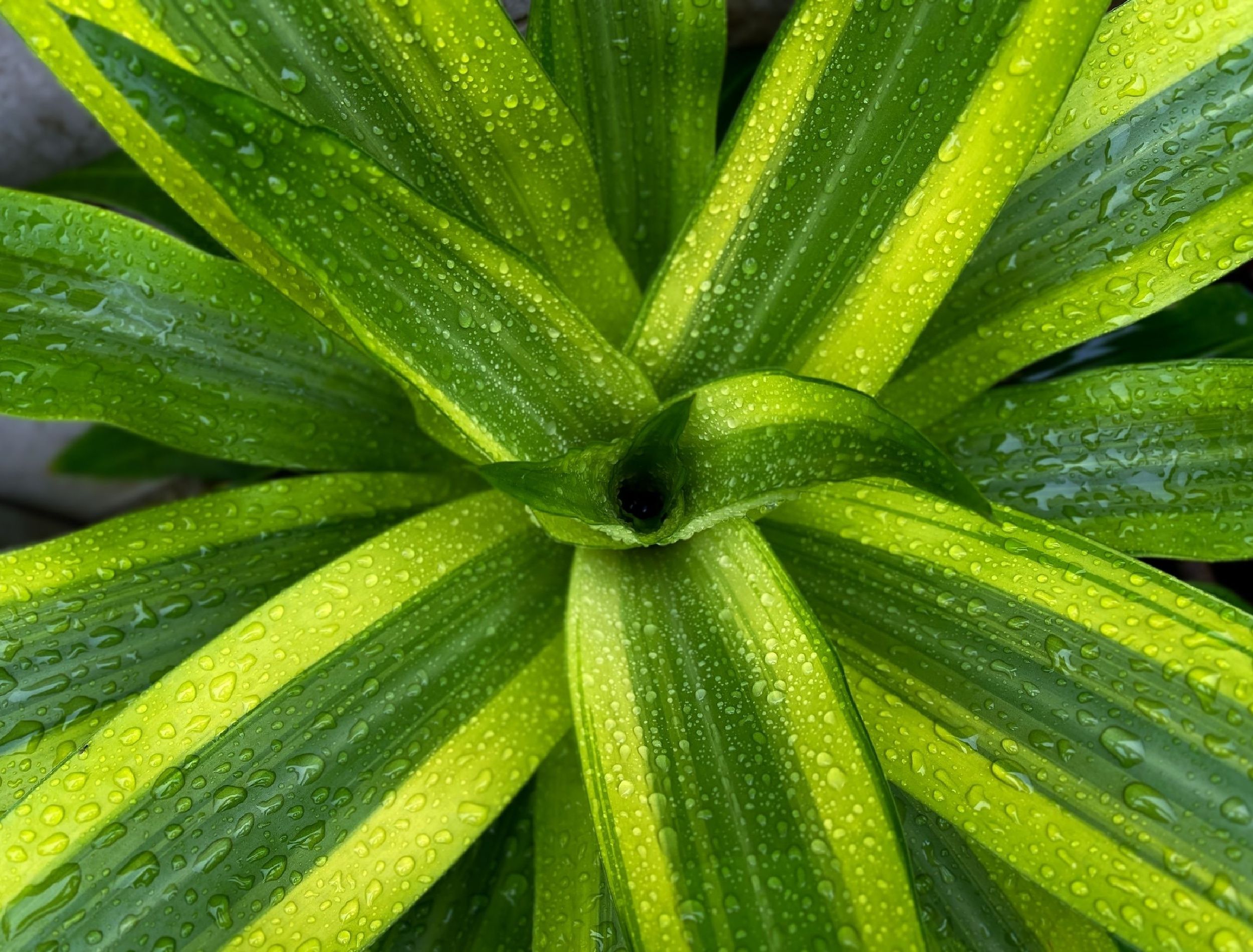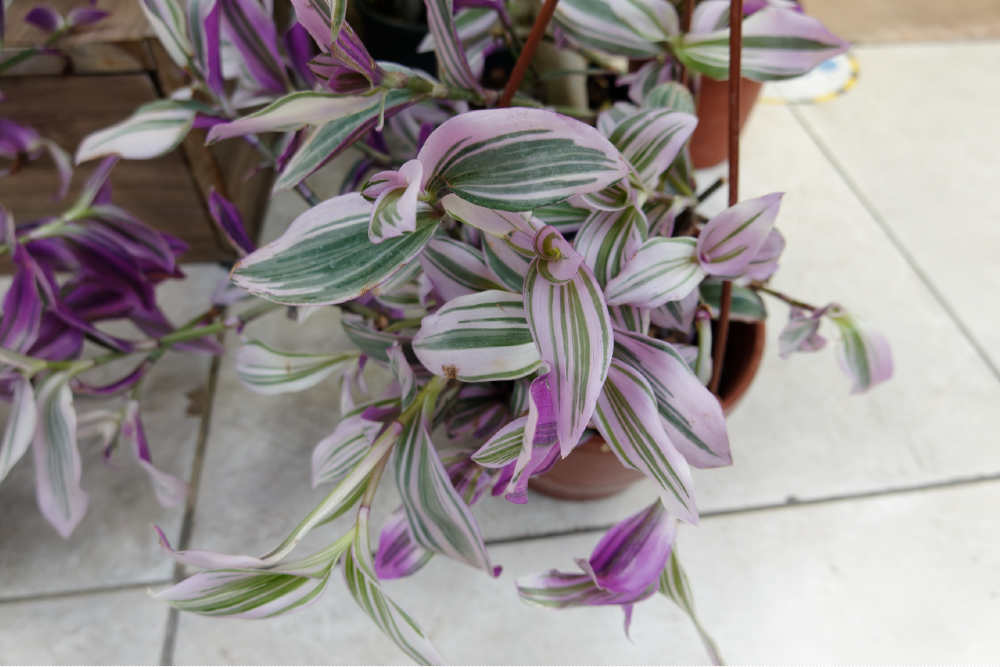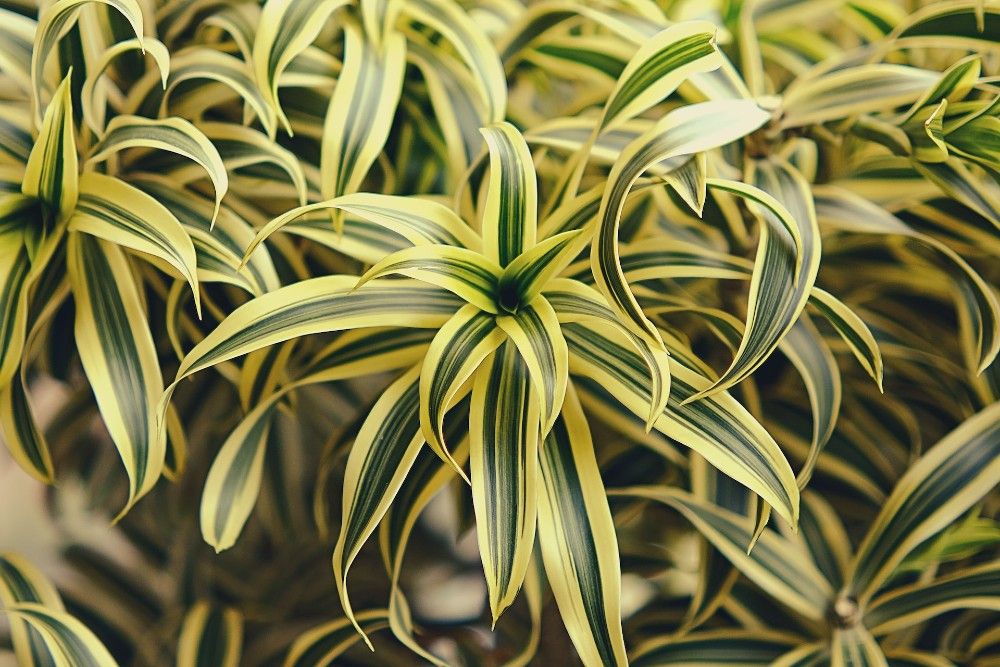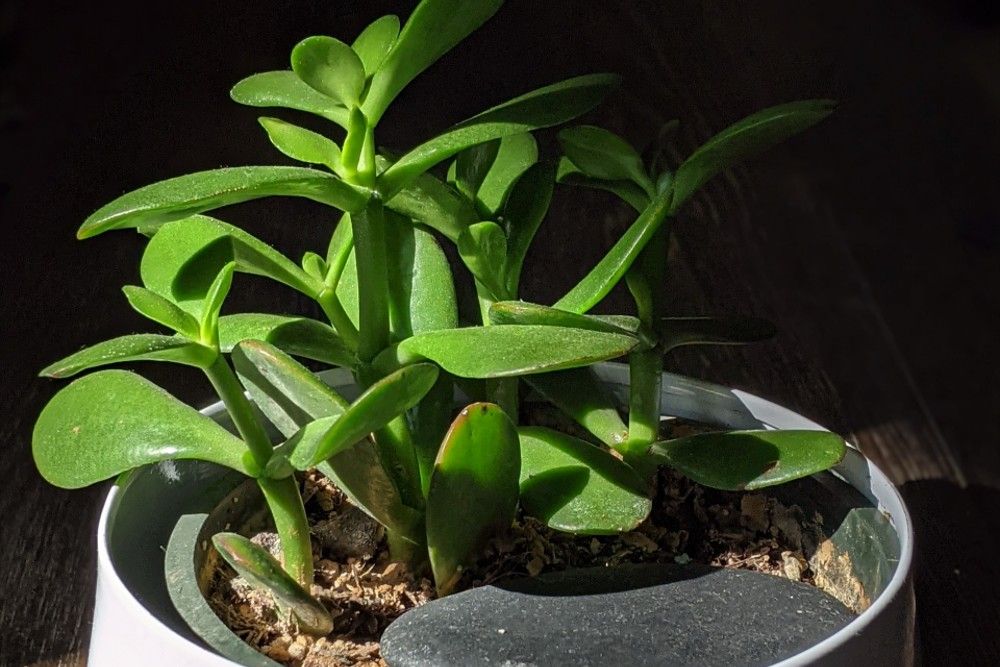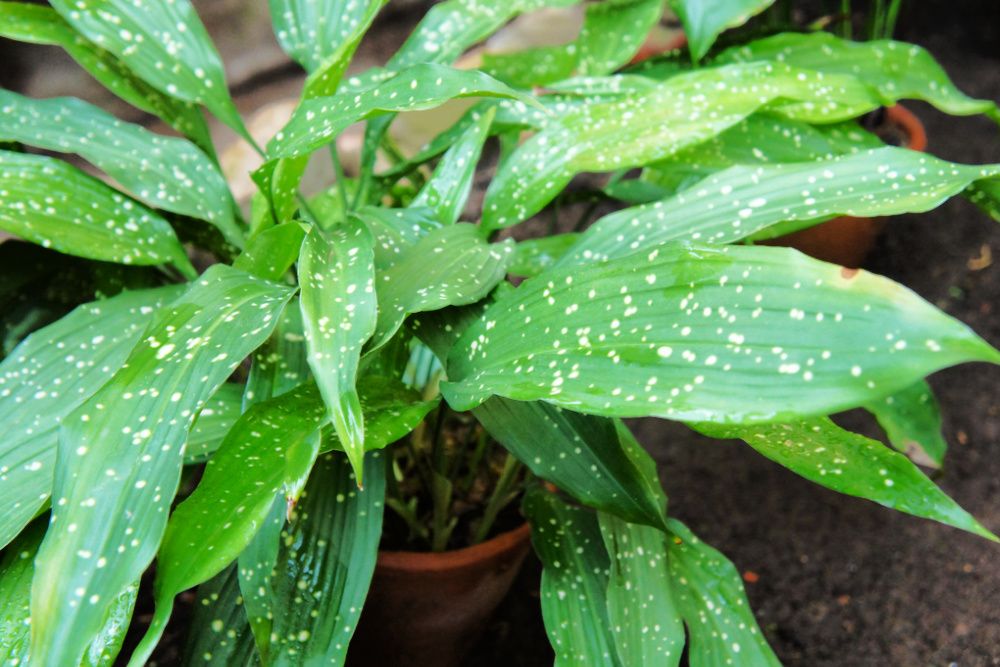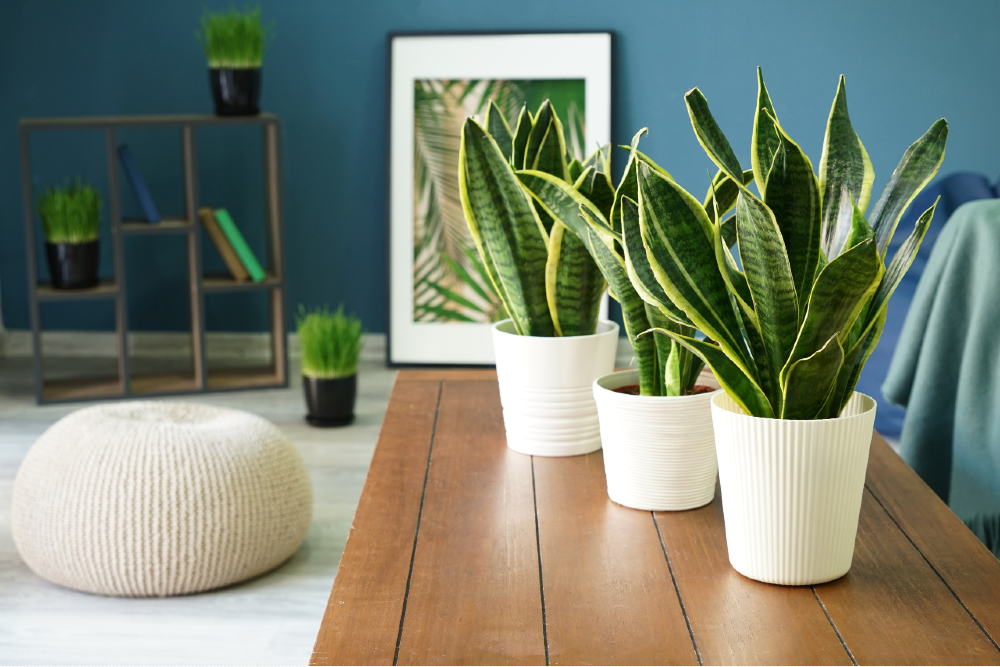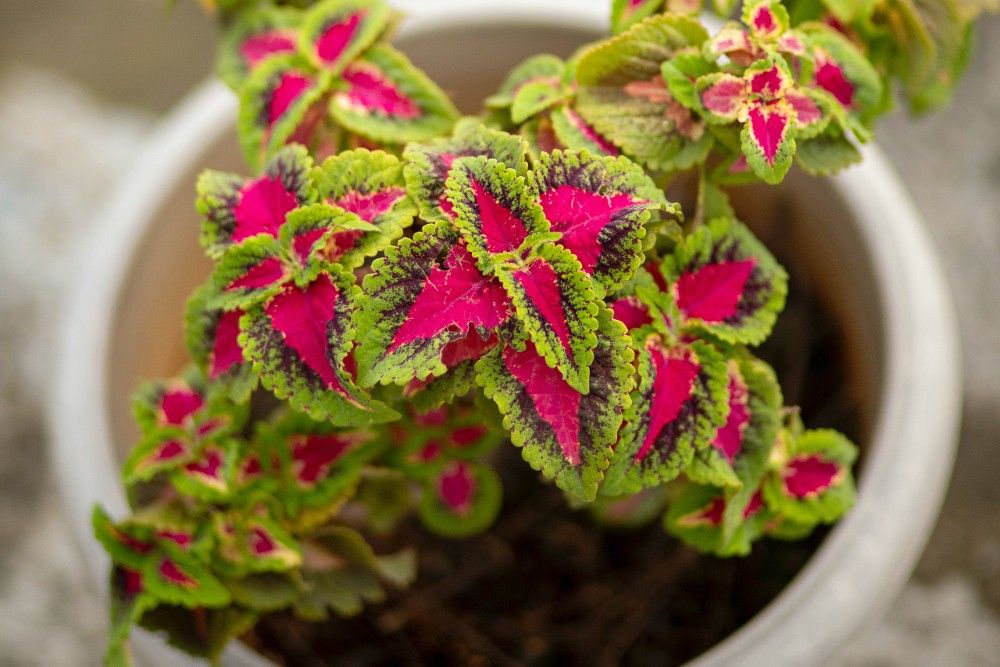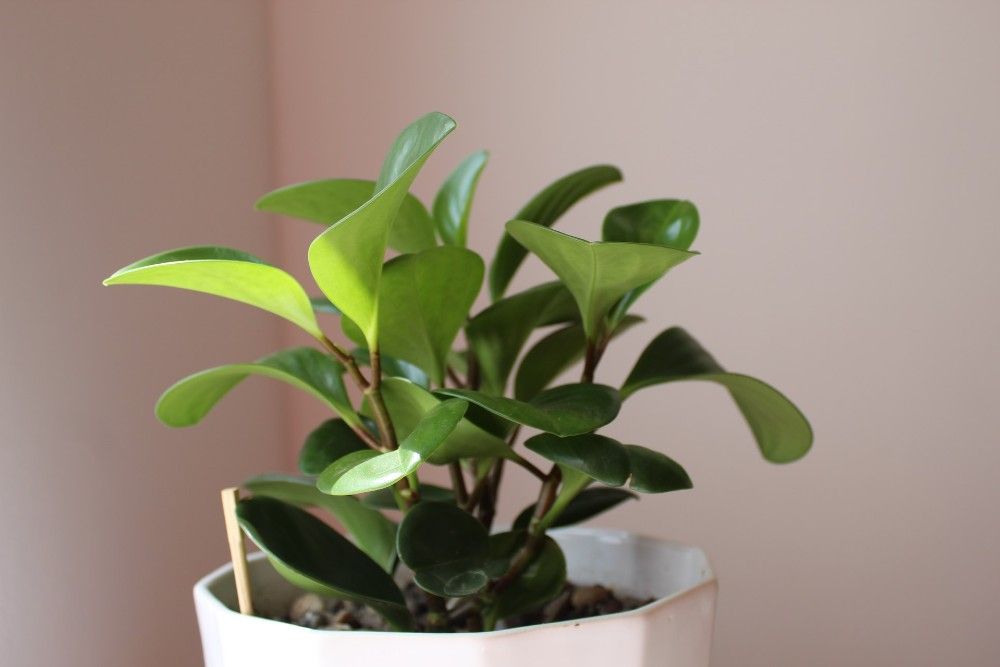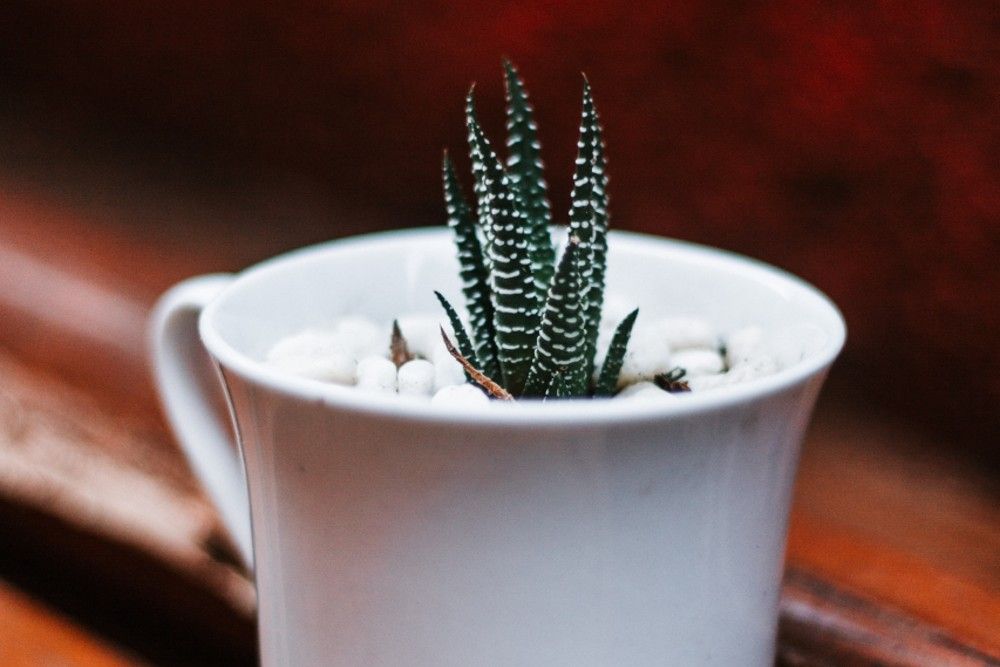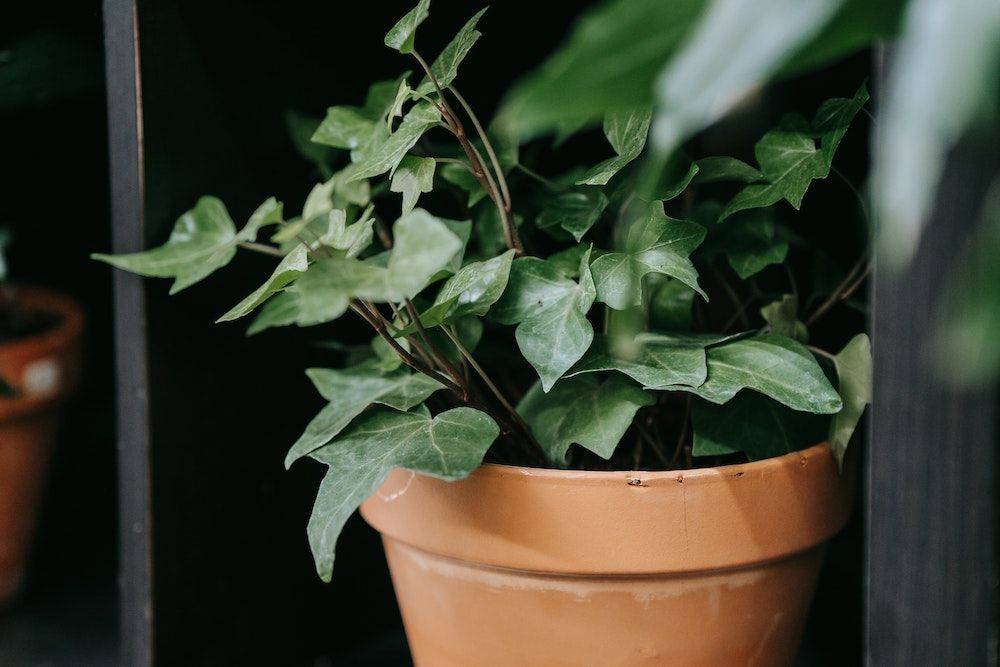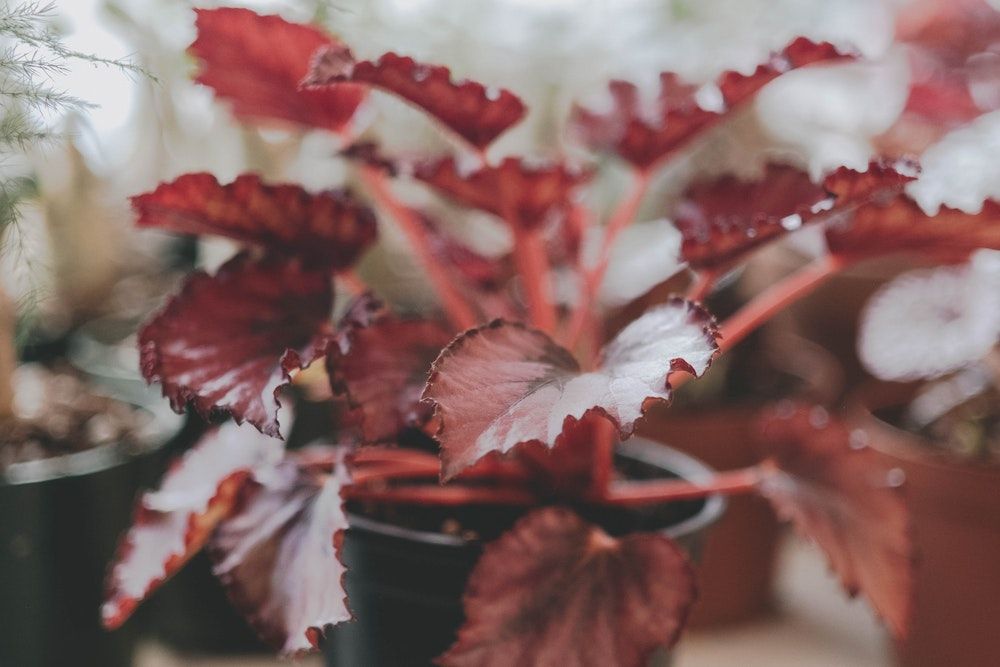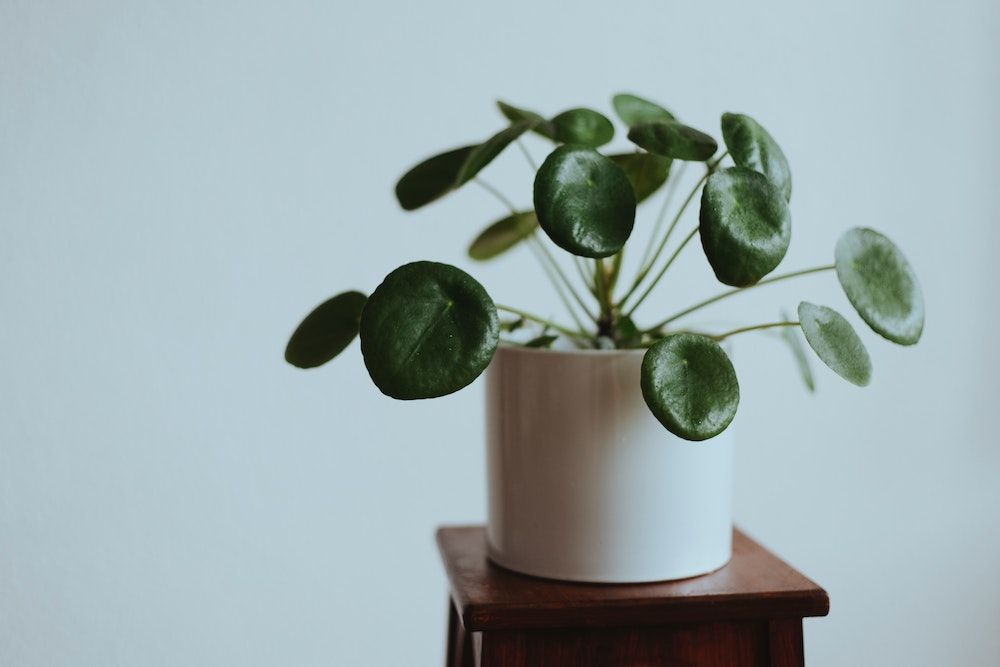Key Takeaways
- Zebrina, Dracaena, and Jade plants are low-maintenance houseplants that can thrive in basement spaces with low light and cool temperatures.
- These plants can be placed in various locations within the basement, including north, east, west-facing windows or areas away from windows.
- They require minimal sunlight, ranging from two to six hours of direct sunlight daily, and prefer temperatures between 50 and 75 degrees Fahrenheit.
While the brightly-lit upper floors may hold an array of vibrant houseplants and flowers, basements are often a poor environment for plants. Dimly lit, cold, and damp, many tropical plants struggle to thrive down below. However, for those that live in basements or want to bring life to the lower levels, all is not lost. There are many aesthetically-pleasing houseplants that thrive in basement spaces.
1. Tradescantia Zebrina
Going by many names: wandering dude, spiderwort, inch plant, zebra plant, or just zebrina, this stunning trailing plant is one of the most prolific and lowest-maintenance houseplants. They prefer a medium-light environment, where their leaves turn rich purple with bright silver stripes, but they are flexible about their location. Zebrinas will survive almost anywhere indoors and only require about two to six hours of direct sunlight daily.
They will be happy in a north, east, or west-facing window, but their leaves may fade into solid green or become leggy in lower light. However, since they are fast-growing, you can cut off any leggy growth and propagate the stem cuttings directly in soil or water.
Zebrinas also thrive in temperatures between 55 and 75 degrees Fahrenheit, making them perfect for a cooler lower level. Other variegated varieties include 'Purpusii,' 'Tricolor,' and 'Quadricolor,' ranging from darker purple to pink and cream-colored leaves.
2. Dracaena Fragrans
Commonly called the corn plant, this tropical plant flourishes in low-light environments. Dracaenas do best in temperatures between 70 and 80 degrees Fahrenheit but can handle slightly lower temperatures if it doesn’t drop below 50 degrees.
Corn plants prefer indirect and filtered light, requiring only two hours or less of direct sunlight daily. They are ideal set back a few feet from a window or sliding door if you have a walk-out basement. Although they are slow growing, they can become quite tall (ranging from 3 to 14 feet). If you are tight on space, consider smaller potted varieties, such as the 'Compacta.' Other popular cultivators include the 'Warneckii' with yellow stripes, the 'Bausei' with white stripes, and the 'Mass Cane' with a prominent, thick trunk.
3. Crassula Ovata
More often called the jade plant, this succulent shrub thrives in direct sunlight (handling six or more hours of direct light), ideal for a south or west-facing basement window. They will also survive in indirect light (only requiring two to six hours of direct light a day), but if it’s not bright enough, the stems may droop, and the leaf color may turn a deeper green.
While they can grow up to 6 feet in height in their native habitat in southern Africa, they are slow-growing indoors. They also have shallow root systems, meaning they don’t require deep pots.
Jade plants like it cool, thriving in daytime temperatures between 65 and 75 degrees Fahrenheit — perfect for the cooler basement level. They prefer lower temperatures, between 50 and 55 degrees Fahrenheit at night. Throughout the winter, they should be happy on the window sill as long as the leaves aren’t touching the glass panes and there are no drafts.
4. Aspidistra Elatior
This plant lives up to its nickname as cast-iron, tolerant of low light, cool temperatures, and infrequent watering. Handling two hours of direct sunlight a day or less, corners, stairways, and other areas away from windows are perfect locations. Able to stand temperatures below 50 degrees Fahrenheit and hardy in USDA zones 7 to 11 outside, these plants will be right at home with the cool temperatures in your basement.
Despite tolerating extreme conditions, they will thrive in more light, and the large, flat leaves can grow up to 2½ feet long, adding a spectacular focal attraction. Variegated cultivators to brighten up your living space include 'Milky Way' featuring white spots, 'Goldfeather' with yellow stripes, and 'Asahi' with white leaf tips.
5. Dracaena Trifasciata
Snake plants are popular because they will thrive almost anywhere in your home as long as they aren’t overwatered. However, they prefer two to six hours of direct sunlight daily. Temperatures above 65 degrees Fahrenheit are ideal, but they can handle temperatures as low as 50 degrees Fahrenheit.
The bird's nest snake plant, 'Hahnii,' is great for the basement because it doesn't grow more than 1 foot tall. Place it on a window sill or coffee table.
6. Coleus Scutellarioides
More commonly known as just coleus, this foliage plant is part of the mint family. They have a unique marked leaf pattern and come in an array of colors, from bright red and green to pink and purple. While cold-sensitive outdoors with temperatures below 50 degrees Fahrenheit, they are fantastic houseplants.
Inside, they thrive in various lighting, from low (less than two hours of light a day) to full sun (six hours or more). Place them in front of east, north, or west-facing windows for best results.
7. Chamaedorea Elegans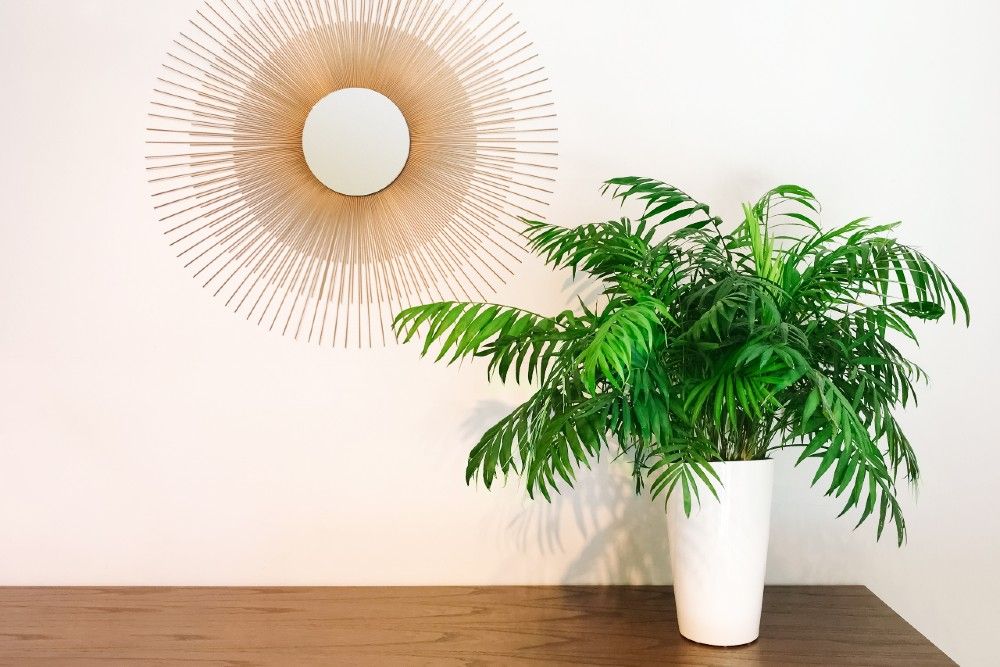
The parlor palm is one of the most popular houseplants because it performs well in low-light and low-humidity environments. They prefer daytime temperatures between 70 and 80 degrees Fahrenheit and nighttime temperatures between 65 to 70 degrees Fahrenheit. However, in the winter, they require even lower temperatures, between 55 to 60 degrees Fahrenheit. This makes them perfect for that basement that stays a touch colder throughout the winter months.
These elegant plants can take up quite a bit of space, so they do best in a large area. Since Parlor palms perform best in indirect sunlight, only requiring two hours or less of direct sunlight daily, an east or north-facing window is ideal.
8. Peperomia Obtusifolia
Confusingly called the baby rubber plant, this peperomia isn’t related to the rubber plant. The slow-growing leaves have beautiful cream-colored splotches, occasionally accented with pink. Pepperomias need only two to six hours of direct sunlight a day. However, you may notice growth slowing or leaf drop in extremely low light.
And while they will thrive in higher temperatures, they can survive in temperatures as low as 50 to 55 degrees Fahrenheit, meaning your basement won’t freeze them out.
9. Haworthia
Jokingly called fairy washboards, these stemless, rosette-forming succulents have small defining teeth along their leaves. Compared with other succulents, they don’t need as much direct light (only requiring two to six hours a day), so they will do best in an east or west-facing window. However, in low light, they may lose their vibrant color. Since haworthias only grow 1 to 3 inches in diameter and 6 to 8 inches in height, they are perfect for small basement window sills, easily fitting in a 4 to 5-inch pot.
Like other succulents, they tolerate lower nighttime temperatures but prefer daytime temperatures between 75 and 90 degrees Fahrenheit. However, they are extremely flexible in their temperature range, handling lows of 40 degrees Fahrenheit and highs of 100 degrees Fahrenheit.
10. Hedera Helix
English ivy is a fantastic climbing plant, hardy in USDA zones 4 through 13, that likes cooler temperatures, thriving in daytime temperatures between 50 and 70 degrees Fahrenheit and handling lower nighttime temperatures and drafts from open windows.
Place ivy in a north, east, or west-facing window to ensure it receives lots of light. Or, if you don’t have a lot of natural light, ivy can survive with two hours or less of direct sunlight and even off of artificial light (only needing a minimum of about 200 to 500-foot candles daily). However, variegated varieties may revert to solid green in low-lighting conditions. If you have a basement bathroom with a window, this is an excellent place for ivy, as it will thrive in the humidity.
11. Begonia Rex
Begonias are a beautiful plant with over 1,500 different species. The Begonia rex is a group of colored-leafed begonias that do well as houseplants. They like bright light but not direct sunlight (surviving with two hours or less of direct sunlight daily), so they are great set back a few feet from a window.
Ideal temperatures range between 66 and 73 degrees Fahrenheit, and they don’t do well with temperatures below 55 degrees.
12. Pilea Peperomioides
Commonly called the Chinese money plant, this prolific little plant may bring you good luck with its flat, coin-shaped leaves. While they can grow taller if provided support, they don’t often grow larger than 12 inches tall and have a shallow root system, making them perfect for a small pot on a window sill.
Money plants like bright, indirect light for about 8 to 12 hours a day and temperatures between 65 and 80 degrees Fahrenheit. They can handle occasional drops in temperature, though, as long as it's not below 55 degrees Fahrenheit. In too low of light levels, growth may slow and be more spread out.
13. Zamioculcas Zamiifolia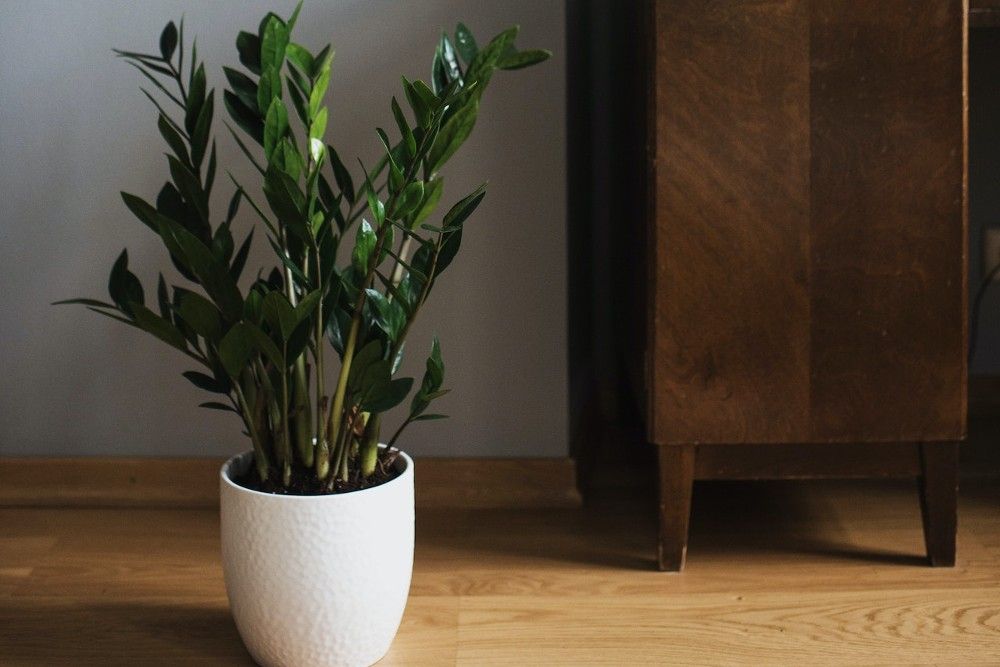
The ZZ plant, often affectionately called, is another hardy houseplant that will grow in two hours of direct sunlight or less. They can even grow under artificial light, surviving off only 100 foot-candles of light daily.
ZZ plants also tolerate lower temperatures if it doesn’t drop below 60 degrees Fahrenheit. 'Raven' ZZ is a popular and stunning black cultivar that can handle even lower lighting levels — perfect for the mood of that darker level.
Bring Life to Your Basement
While all plants need sunlight, and many prefer warmer temperatures, some houseplants will thrive in a basement. Most houseplants prefer temperatures above 60 degrees, but during the winter months can handle a slight drop as they go dormant. Consider an electric heating mat if you are still struggling to keep your plants warm. And for low-lighting situations or changes in light over winter, try artificial lights for your plants. Whatever you decide, bring life into your basement with a few easy-to-care-for houseplants.
Do you have any of these plants in your basement? Share your experience in the comments!

